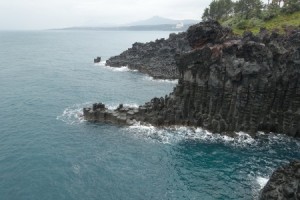
Cruise ship itineraries oftentimes include stops at majestic islands. My Asian adventure was no exception. After visiting Busan, South Korea, we traveled southwest to South Korea’s star location, JeJu Island. The beauty associated with this region is unmistakeable. It is a temperate volcanic island that is approximately 120 km off the Southern coast of South Korea. It boasts the tallest mountain in South Korea, Hallasan, which is located in Hallasan National Park. Unfortunately, we were not able to visit this noteworthy place. Instead, we took a full-day trip to Jungmun. Our stops included the Mysterious Road, Yeomiji Botanical Gardens, Cheonjeyeon Waterfalls, a break for an authentic Korean barbecue lunch at the Kensington JeJu Hotel, Jusangjeolli Cliffs, and the Yakcheonsa Temple.
The weather forecast printed on the ship’s daily bulletin stated “Partly Cloudy Skies” and the forecast from the Captain’s deck also did not mention any rain. Our tour ticket reminded passengers to bring a jacket. As a seasoned traveler, I should have been ready for the unexpected. Silly me. Before leaving the ship, I removed my umbrella and raincoat from my backpack. Instead, I packed a warmer quilted jacket.
While the Mysterious Road gets a lot of hype online. It was an unnecessary stop. We should have gone directly to the Yakcheonsa Temple. After viewing the Mysterious Road, our tour guide had the foresight to modify our schedule. He saw the ominous skies and wanted to minimize the discomfort of those who were ill prepared for the ensuing downpour, including himself. He did not have an umbrella or a raincoat.
Yakcheonsa Temple
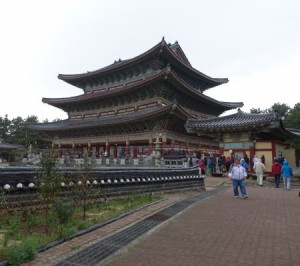
The Yakcheonsa Temple shifted to second position and became the next place visited. It is JeJu Island’s largest temple complex, covering 122,100 square meters. Several websites claim that it is the largest in Asia. The impressive main hall is 4 stories tall. Even though it resembles structures built during the Joseon Dynasty (14th-19 centuries), it is a modern house of worship that was built in 1981 by the Buddhist monk, Hae-in.
As our motor coach approached the temple’s parking lot, the rain drops started to splash onto the windows. As we walked swiftly toward the temple, we paid little attention to the landscaped grounds that included a pond that is believed to contain mythical medicinal water.
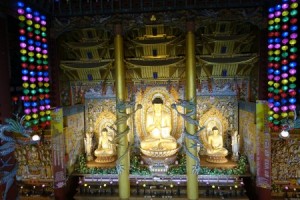
Inside the temple is a golden Buddha that is approximately 3 meters tall. Walking up the wide wooden staircases, we were able to view it from multiple levels.
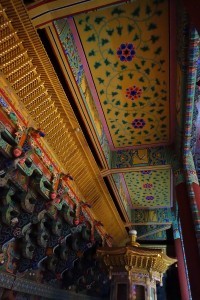
The artistic detail could be viewed on the walls and ceiling.
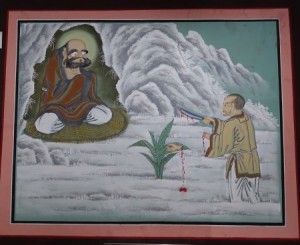
There were numerous murals that depicted Buddhist legends.
Yeomiji Botanical Gardens
To escape the pelting rain drops, our guide deviated once again from our original itinerary and headed to the Yeomiji Botanical Gardens. This facility was opened in 1989 and as of 1992 was recognized as Asia’s largest greenhouse. The greenhouse is 12,543 square meters and sits on 112,397 square meters of land.
There are more than 1,300 plant species displayed inside and another 1000+ plant species situated outside the main building. Due to nonstop rain, we stayed inside until we had to bolt to the bus.
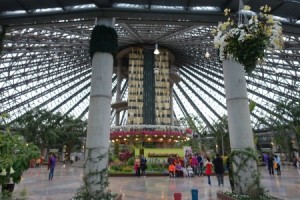
The impressive main hall feeds into a wide array of specialty gardens.
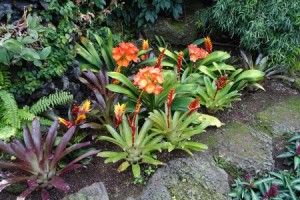
The flower garden hosts a large variety of flowering species.
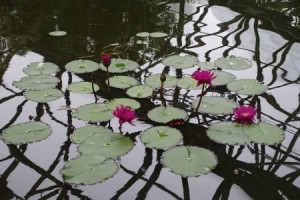
The aquatic garden incorporates ponds and waterfalls into its display.
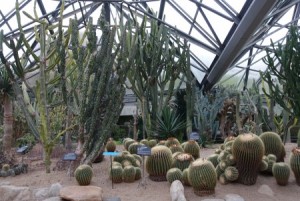
The cactus garden reminded me of America’s southwestern states.
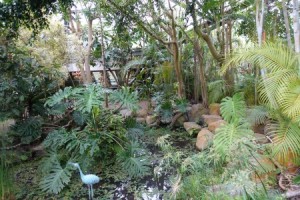
The jungle garden included plants normally found along the Amazon and in Africa.
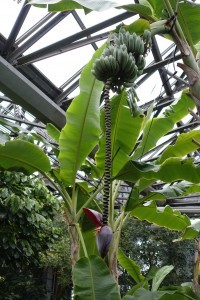
The tropical fruit garden showcased many tropical and subtropical plants.
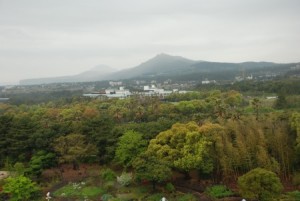
While most people took the elevator up to the observatory, I preferred to walk. Since it was an overcast day, my panoramic view was obscured by low level clouds.
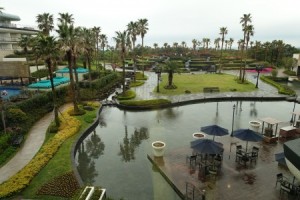
Next, our bus had lunch at the magnificent Kensington JeJu Hotel. We walked through an impressive lobby area that looked upon this picturesque pool and grounds.
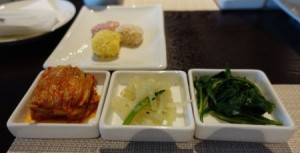
We were treated to a Korean multi-course Korean meal.
Jusangjeolli Cliffs
The rain persisted as the passengers boarded the buses. The Jusangjeolli Cliffs were next.
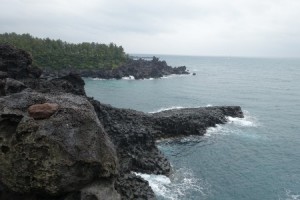
This amazing area is inundated with rocky cliffs with columnar joints. These formations run for about 2 km along the coast from Jungmun-dong to Daepo-dong in Seogwipo City. Volcanologists date these extraordinary natural sites to 140,000 to 250,000 years ago.
During that time period, the coastal lava formed hexagonal joints. These joints formed during the lavas cooling process. The molten lava split the rock into polygonal columns or tortoise shell joints. These columns usually have 5-6 sides. Narrower columns were caused by faster cooling.
Prior to the mid 18th century, scientists felt that the symmetrical basalt columns were caused by the crystallization in the water. Since that time volcanologists see the connection between the cooling down of volcanic vents.
Cheonjeyeon Waterfalls
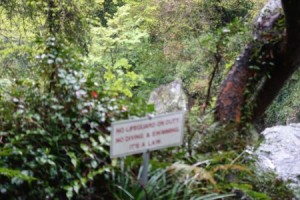
On the way back to the bus, we chuckled at one of the few signs in English. “No Lifeguard on Duty. No diving & Swimming. It’s a law.”
Related Posts
Exploring Southeast Utah-Little Wild Horse Canyon
Stroll Through the Billy Rose Art Garden at the Israel Museum
Pre Cruise Exploration- Hong Kong
Sandra’s Bio
Sandra Bornstein is the author of MAY THIS BE THE BEST YEAR OF YOUR LIFE. It is available on Amazon. Sandra’s memoir highlights her living and teaching adventure in Bangalore, India. She is a licensed Colorado teacher who has taught K-12 students in the United States and abroad as well as college level courses. Sandra is married and has four adult sons. The memoir was a finalist in the Travel category for the 2013 Next Generation Indie Book Awards, the 2013 International Book Awards, the 2013 National Indie Book Excellence Awards, the 2013 USA Best Book Awards, and received an Honorable Mention award in the Multicultural Non-Fiction category for the 2013 Global ebook Awards.
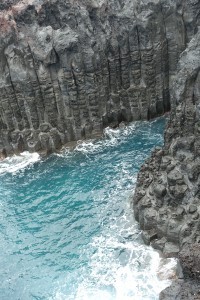
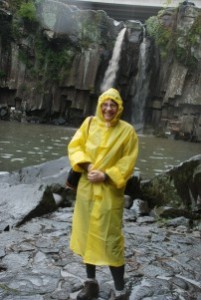
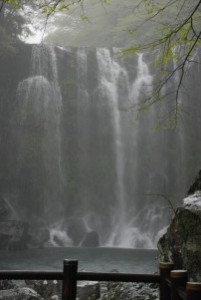
Leave a Reply
You must be logged in to post a comment.